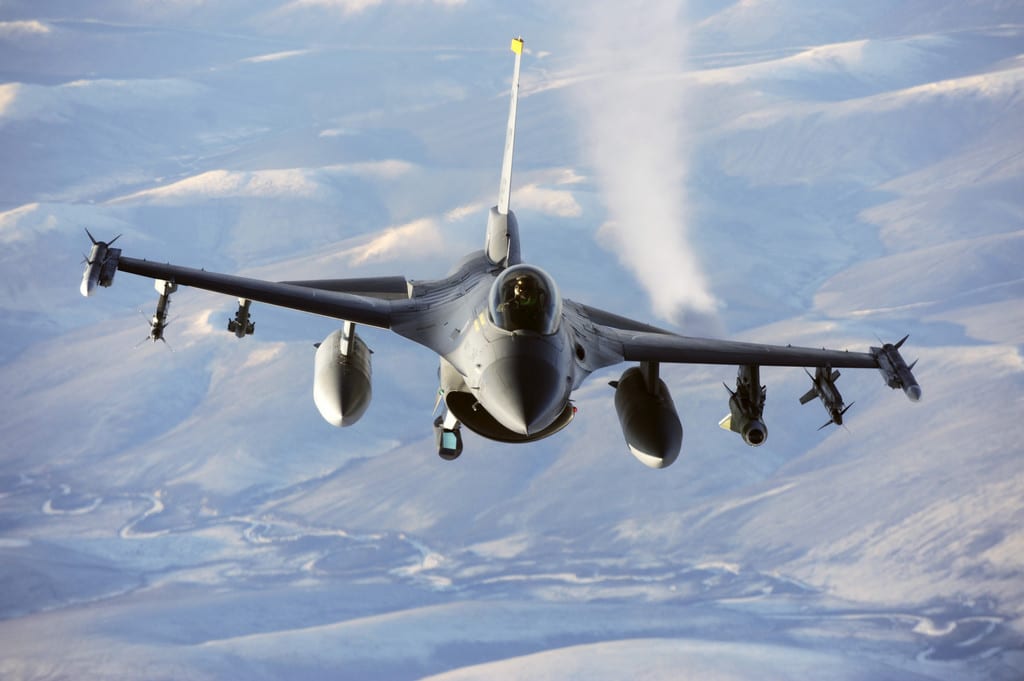It’s not every day someone argues that an entire service of the United States Armed Forces should be disappeared. But that is exactly what Robert Farley proposes in his new book, Grounded. Farley makes a case for the elimination of the U.S. Air Force, basing his argument on the inaccurate notion that strategic bombing is the sole reason for its existence as an independent service. He also takes the Air Force to task for not adequately supporting ground forces. He believes Air Force aircraft are best subsumed into the Army and Navy for better support of soldiers and sailors. In doing so, Farley disregards what the Air Force does best—air domain dominance—and undervalues a key component of United States historical successes in combat.
Air domain dominance doesn’t just happen. The mission requires the right people, equipment, training and doctrine to succeed. Undertaking a Capability Based Analysis (CBA) offers a means of evaluating the potential impact of Farley’s recommendation on this fundamental Air Force mission. A thorough CBA takes into consideration the doctrine, organization, training, materiel, logistics, personnel and facilities required for a given mission.
Air Force doctrine prioritizes achieving command of the skies above the land and maritime battlespace first and foremost in any conflict. And, doctrine is written based on lessons learned in prior conflicts. The United States Army and Navy are the best in the world at dominating land and sea, and each service continually updates its doctrine to retain superiority. An independent Air Force, drawing on decades of combat experiences in the air domain, is best suited to create air-centric doctrine. United States dominance in the five core Air Force missions would be diluted and dominance in the other domains would be at risk if the other services were forced to absorb the Air Force’s mission and responsibility for air domain doctrine. Far from streamlining American defense structures, subsuming Air Force personnel and materiel into another service would build larger, more cumbersome, and less focused organizations.
Each branch of the U.S. military has unique, service-specific priorities based fundamentally on the domain in which it fights. Air Force aircraft and equipment are hardly integral to either the Army’s or the Navy’s priorities. The idea that the Army or Navy would, upon absorbing this equipment, reorganize to prioritize air dominance alongside ground or maritime operations ignores the lessons that led to the creation of a separate air service in the first place. Army dominates on land, and the Navy on sea. Those are big responsibilities.
By focusing on one domain, each service organizes itself to maximize effectiveness in that domain. Adding additional domain requirements would create an intrinsic conflict in organization. For example, a bomber wing is best employed to attack an enemy’s air force. Yet, it is also capable of supporting soldiers, tactically and operationally. If the Army were given bombers, they would be dispersed to support ground combat units. To do otherwise—to maintain the current emphasis on the air domain—would betray the organizational structure that has contributed to the Army’s dominance on land, and would equate to a simple name change for the Air Force. But this is not Farley’s argument. He believes the Air Force should support ground forces—period. Adopting such a change in the Air Force’s strategic orientation would dilute the value of Air Force personnel and materiel currently dominating the air.
Further, if a desire to save money encouraged the U.S. to heed Farley’s suggestion to forego air dominance, then a far more cost effective alternative would be to just disband the Air Force and mothball the aircraft. The United States military could be collectively oriented solely toward land and sea-specific missions. But savings would need to be weighed against new requirements that should be expected to arise. For instance, the Army would have to devise a method to protect soldiers from air attack. Surface-to-air defenses would become far more pervasive within the Army organization. Rather than brigade-level air defense, the Army would have to consider company-level air defense in order to maintain agility. This added requirement would inevitably slow the Army down. And, there is ultimately no guarantee that the defenses would protect soldiers from air attack, since enemy air forces would train to defeat ground-based air defenses.
As a result of the Air Force’s doctrinal emphasis and its organization, the service’s materiel acquisitions are naturally focused on the air domain. The B-2, for example, was designed to be the best bomber in the world. Navy aircraft carriers and Army tanks are similarly designed and procured with such service-specific requirements in mind. An independent Air Force with a focus on the air is best positioned to understand the performance tradeoffs necessary to acquire air dominant aircraft. While both the Army and Navy also have aircraft, those aircraft were conceived and produced for unique purposes: to support Army and Navy missions. To be sure, Air Force aircraft can do this, as well, a fact that has always created confusion for scholars like Farley. But the fact that Air Force aircraft can perform the same missions conducted by aircraft of the other services does not mean that having them do so represents their best use.
In terms of training, Air Force airmen are purposefully equipped with the skills to dominate the air domain. The selection process is rigorous and designed to recruit people with the right attitude and aptitude to excel in this domain. At each step in the development process, they are continually challenged and evaluated. The training is intense, and designed so that the first time an airman sees combat, he/she is ready to rule the air. Significantly, this training approach is not limited to pilots. Numerous career fields in the Air Force have a combat component to them. Combat controllers, joint terminal attack controllers, combat rescue, security forces, logistics personnel, and many others play their part at times under fire.
New airmen put their training to the test at Red Flag, where they engage in realistic mock combat on a large scale for the first time. The two-week exercise was designed after analysis showed that this type of intense training increased survival rates in combat. Red Flag is also the first time air dominance comes together in a holistic fashion. It is in this boiling cauldron of supersonic death where one first understands how each core mission supports and is supported by the primary requirement to dominate the air.
Red Flag is built around the objective of attaining air superiority over a determined, well-trained, and well-equipped air foe. The aerial choreography required to fight and survive in a three-dimensional domain is like ballroom dancing in a tornado. While the Army’s soldiers who fly are incredible at hitting targets in close proximity to troops, they are neither trained nor equipped to fight in three dimensions. Eliminating an independent air force and incorporating it into the Army would inevitably signal the end of training such as that embodied in Red Flag, leaving American combat aviators vulnerable against an enemy air force whose training remains oriented toward winning in the air domain.
Besides seeing such a transformation in their training under Farley’s proposal, airmen who would be transferred would probably suffer slower promotions in a new service. The Army’s very reason for being is to excel in combat on land. This fact has two important implications. First, Army aircraft and pilots are employed in support of the main effort—the soldier on the ground. And second, the Army emphasizes ground combat experience as a qualifying characteristic in its leaders. Therefore, the aviation career field would have trouble promoting those airmen trained to fight and win in aerial combat. The Army may initially get some of the former Air Force’s personnel, but frustrated by lack of support for their inculcated desire to target the enemy’s air force, they would likely soon separate. Many personnel may choose not to transfer to the Army or Navy in the first place, since these services’ respective missions are not that for which they signed up and were trained.
Additionally, forced retirement would be required for much of the Air Force leadership. While some senior officers and enlisted personnel would be retained for continuity, leaders in the Navy and Army with the ground or sea experience that is most valued in these services would generally replace them. The experience and knowledge that Air Force flag officers attained over years of fighting in the air domain would be lost, jeopardizing prospects for success in any future conflict through an unfortunate lack of institutional knowledge of air combat.
Moreover, the dangers that would result from this loss of knowledge would be exacerbated by inevitable changes in the focus of professional military education. Airmen would no longer spend a lifetime studying air combat, resulting in potential blind spots for senior DoD leadership. Eliminating professional military education focused solely on the air domain could mean that future Army and Navy leaders would painfully relearn those lessons.
The benefits of an independent Air Force are far too many and complex to adequately examine in this space. But this article seeks to provide a thoughtful analysis of Professor Farley’s proposal. The United States needs armed forces that are well-trained, well-equipped, well-led, and capable of fighting and winning America’s wars as cost effectively as possible. Farley’s suggested elimination of an independent Air Force, however, would cost billions, make DoD less effective, and displace thousands of talented people. On the basis of these conclusions, and mindful of the incredible record of success achieved by America’s armed forces from the advent of the airplane to today, we ask ourselves whether we are willing to bet the lives of America’s sons and daughters, and the security of this nation, on Professor Farley’s recommendation. We are not.
https://warontherocks.com/2014/02/why-america-needs-an-independent-air-force/ Photo credit: UNC – CFC – USFK





